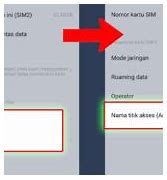Fungsi Sata Port Pada Motherboard

How many SATA ports does a motherboard have?
The number of SATA ports on a motherboard can vary depending on the model and manufacturer. Most motherboards today have multiple SATA ports to accommodate multiple storage devices.
Commonly, you will find four to eight SATA ports on a regular consumer-grade motherboard. However, high-end motherboards designed for enthusiasts or professional use may have even more SATA ports.
What is a SATA port?
A Serial ATA (SATA) port is a standard interface used for connecting storage devices such as hard drives and SSDs to a computer's motherboard. It allows for high-speed data transfer between the storage device and the motherboard.
The SATA port is usually a small rectangular connector found on the motherboard, typically labeled "SATA" or "SATA 3" for the latest version. It is crucial for connecting storage devices to the motherboard and enabling them to communicate with the rest of the system.
Exploring Different Motherboard Models
Now that we have covered the basics of locating the SATA port on the motherboard, let's explore the variations that exist across different motherboard models.
ATX Motherboards with Multiple SATA Ports
ATX motherboards with multiple SATA ports offer flexibility and expandability when it comes to storage options. These motherboards typically have six or more SATA ports, allowing you to connect multiple storage devices simultaneously.
The SATA ports on these motherboards are often grouped together near the edge of the motherboard. The grouping helps in cable management and allows for easy installation and replacement of storage devices.
Some high-end ATX motherboards may also have additional features such as SATA Express ports or M.2 slots for even faster storage options. These ports provide faster data transfer speeds, allowing you to take full advantage of high-performance storage devices.
ATX Motherboards with Multiple SATA Ports
ATX motherboards with multiple SATA ports offer flexibility and expandability when it comes to storage options. These motherboards typically have six or more SATA ports, allowing you to connect multiple storage devices simultaneously.
The SATA ports on these motherboards are often grouped together near the edge of the motherboard. The grouping helps in cable management and allows for easy installation and replacement of storage devices.
Some high-end ATX motherboards may also have additional features such as SATA Express ports or M.2 slots for even faster storage options. These ports provide faster data transfer speeds, allowing you to take full advantage of high-performance storage devices.
ATX and Micro ATX Motherboards
There are two common motherboard form factors: ATX (Advanced Technology Extended) and Micro ATX. The layout and size of these motherboards can affect the positioning and number of SATA ports.
ATX motherboards are larger and typically have more SATA ports. They may have the SATA ports grouped together along one of the edges or scattered across different areas of the motherboard. The ATX layout offers more flexibility when it comes to expanding storage options due to the availability of additional SATA ports and PCIe slots.
On the other hand, Micro ATX motherboards are smaller in size and have fewer SATA ports compared to ATX motherboards. The SATA ports on Micro ATX motherboards are often grouped together near the bottom of the motherboard. Despite having fewer ports, Micro ATX motherboards can still accommodate multiple storage devices, providing a compact option for smaller computer builds.
Now that we have an understanding of the general layout and positioning of SATA ports on the motherboard, let's discuss how to identify the specific SATA ports.
The SATA ports on the motherboard are typically labeled and numbered for easy identification. These labels are usually printed directly on the motherboard itself, near the corresponding SATA ports. The numbering helps you determine the order in which the SATA ports should be used.
Additionally, the SATA ports are color-coded to differentiate between different specifications, such as SATA 3 (6 Gbps) and SATA 2 (3 Gbps). The color-coding can vary depending on the motherboard manufacturer, but SATA 3 ports are commonly designated with a different color, such as blue, while SATA 2 ports may be white or black.
It is important to consult the motherboard manual or refer to the manufacturer's documentation to ensure you are using the correct SATA port for your specific needs. This ensures optimal performance and compatibility with your storage devices.
While the location and identification of the SATA port on the motherboard are crucial, there are a few additional factors to consider when connecting storage devices:
What is a SATA port?
A Serial ATA (SATA) port is a standard interface used for connecting storage devices such as hard drives and SSDs to a computer's motherboard. It allows for high-speed data transfer between the storage device and the motherboard.
The SATA port is usually a small rectangular connector found on the motherboard, typically labeled "SATA" or "SATA 3" for the latest version. It is crucial for connecting storage devices to the motherboard and enabling them to communicate with the rest of the system.
Specialized Motherboards
In addition to ATX, Micro ATX, and Mini ITX form factors, there are specialized motherboards designed for specific applications, such as servers or high-performance workstations. These motherboards often have unique features and layouts to cater to the specific needs of these systems.
For example, server motherboards may have multiple SATA ports and support for RAID configurations to ensure data redundancy and high availability. High-performance workstation motherboards may offer additional storage options like U.2 ports or PCIe-based storage solutions.
When working with specialized motherboards, it is crucial to review the manufacturer's documentation and specifications to determine the location and capabilities of the SATA ports.
The SATA port on the motherboard plays a vital role in connecting storage devices to your computer. Whether you are building a new system, upgrading an existing one, or troubleshooting storage-related issues, understanding the location and identification of the SATA port is essential.
By consulting the motherboard manual or manufacturer's documentation, you can easily locate the SATA port on the motherboard and ensure the correct connection of your storage devices. Remember to follow best practices for cable management and utilize the appropriate SATA ports based on the device's data transfer speed.
As you explore different motherboard models, be aware of the variations in layout and the number of available SATA ports. Different form factors cater to specific needs and preferences, ranging from high expandability with ATX motherboards to compact solutions with Mini ITX motherboards.
Motherboard Layout
Before we dive into the specific location of the SATA port, it's essential to understand the general layout of a motherboard. A motherboard is a printed circuit board that serves as the main hub for connecting various components in a computer. It houses the CPU, RAM, expansion slots, and connectors for peripherals and storage devices.
The SATA ports are typically located along one of the edges of the motherboard. The exact placement may vary depending on the motherboard model and manufacturer. However, they are usually grouped together, making it easier to identify and connect the SATA cables.
In addition to the SATA ports, you will also find other connectors and ports on the motherboard, such as USB ports, audio jacks, Ethernet ports, and display connectors. It's important to consult the motherboard manual or refer to the manufacturer's website for the specific layout and placement of ports on your motherboard.
Locating the SATA Port on the Motherboard
If you are looking to connect a SATA device, such as a hard drive or SSD, to your motherboard, it is essential to know where the SATA ports are located. The SATA ports on a motherboard are the connectors that allow you to connect your storage devices. They are crucial for any computer build or upgrade involving storage.
The location of the SATA ports can vary depending on the motherboard model and manufacturer. In most cases, you can find the SATA ports near the edge of the motherboard, typically grouped together. They are usually rectangular in shape and have a series of metal contacts inside.
When locating the SATA ports, also look for the SATA labels or markings near the connectors. These labels can help you identify which port corresponds to which storage device.
If you are having difficulty locating the SATA ports, consult your motherboard's user manual. The manual will have detailed diagrams and instructions to help you find the SATA ports easily.



